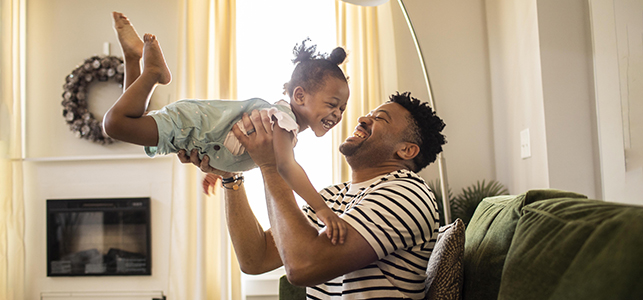Making toddler transitions easier
Toddlers have a mind of their own – and that’s a good thing – but it can sometimes make transitions troublesome throughout the day.
“It’s important to recognize toddlers’ big feelings while holding firm, yet kind, boundaries – especially when it comes to health and safety,” said Dr. Bergen Nelson, pediatrician and former elementary school teacher. “Kids don’t typically develop the ability to reason until they’re about 7 years old. So, while trying to reason with a toddler is often futile, there are several approaches you can take to give them some control and acceptance of daily tasks and transitions.”
Pediatrician tackles toddler transitions with preparation and fun
- Develop routines – Kids thrive on knowing what to expect. If they know after play time, for example, you’ll sing a cleanup song then have a snack they’re more likely to go through the routine without a fuss. While not every day can realistically look the same, keeping a familiar rhythm to most days will provide some comfort in situations that could otherwise feel overwhelming.
- Give warnings – A countdown gives kids a chance to prepare. “You can go down the slide three more times, then it’s time to go home for lunch.” They may need a reminder or help with counting down, so they don’t get distracted and too caught up in the fun again.
- Allow plenty of time – When possible, allow enough time for your little one to finish drawing their picture, building their tower or whatever activity they’re doing. These few extra minutes can help to keep the transition calm and tantrums to a minimum.
- Use visual cues – Whether it’s a schedule for the day with pictures on the fridge, or a visual timer that shows how much time they have until the next activity, visual cues can help reduce anxiety around not understanding or knowing what’s happening.
- Offer choices – Simple choices can help toddlers feel a sense of control. “Would you like to put on your coat, or would you like help?” They’re wearing the coat either way and offering them the choice gets you one step closer to heading out the door. Sticking with just two choices tends to work best for little ones.
- Make it fun – Keep the process lighthearted by singing a song, incorporating a toy and/or using silly movements in the transition. Dancing or “flying” their way to the car or kitchen for the day’s next activity can be pretty enticing.
Toddlers pick up on the emotions of the adults around them. Unlike adults though, they haven’t developed the language skills to communicate what they’re feeling, so frustration often comes out in the form of tantrums. Preparation and providing autonomy when possible can guide transitions in a positive direction. When tantrums inevitably do occur, however, it can provide the opportunity to help them work through tough emotions – an important skill they’ll use throughout their lives.
